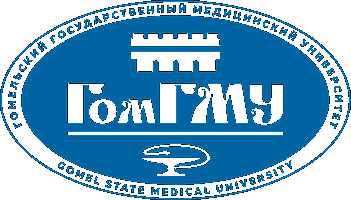Показать сокращенную информацию
COVID-19 infection in adult patients with hematological malignancies: a European Hematology Association Survey (EPICOVIDEHA)
| dc.contributor.author | Pagano, L. | |
| dc.contributor.author | Salmanton-García, J. | |
| dc.contributor.author | Marchesi, F. (...) | |
| dc.contributor.author | Stoma, I. [et al.] | |
| dc.date.accessioned | 2021-10-18T05:37:33Z | |
| dc.date.available | 2021-10-18T05:37:33Z | |
| dc.date.issued | 2021 | |
| dc.identifier.citation | COVID-19 infection in adult patients with hematological malignancies: a European Hematology Association Survey (EPICOVIDEHA) / L. Pagano, J. Salmanton-García, F. Marchesi, (...), I. Stoma [et al.] // Journal of Hematology and Oncology. – 2021. – Vol. 14, №1. – P. 168. | ru_RU |
| dc.identifier.uri | http://elib.gsmu.by/handle/GomSMU/9380 | |
| dc.description.abstract | Background: Patients with hematological malignancies (HM) are at high risk of mortality from SARS-CoV-2 disease 2019 (COVID-19). A better understanding of risk factors for adverse outcomes may improve clinical management in these patients. We therefore studied baseline characteristics of HM patients developing COVID-19 and analyzed predictors of mortality. Methods: The survey was supported by the Scientifc Working Group Infection in Hematology of the European Hematology Association (EHA). Eligible for the analysis were adult patients with HM and laboratory-confrmed COVID19 observed between March and December 2020. Results: The study sample includes 3801 cases, represented by lymphoproliferative (mainly non-Hodgkin lymphoma n=1084, myeloma n=684 and chronic lymphoid leukemia n=474) and myeloproliferative malignancies (mainly acute myeloid leukemia n=497 and myelodysplastic syndromes n=279). Severe/critical COVID-19 was observed in 63.8% of patients (n=2425). Overall, 2778 (73.1%) of the patients were hospitalized, 689 (18.1%) of whom were admitted to intensive care units (ICUs). Overall, 1185 patients (31.2%) died. The primary cause of death was COVID19 in 688 patients (58.1%), HM in 173 patients (14.6%), and a combination of both COVID-19 and progressing HM in 155 patients (13.1%). Highest mortality was observed in acute myeloid leukemia (199/497, 40%) and myelodysplastic syndromes (118/279, 42.3%). The mortality rate signifcantly decreased between the frst COVID-19 wave (March–May 2020) and the second wave (October–December 2020) (581/1427, 40.7% vs. 439/1773, 24.8%, p value<0.0001). In the multivariable analysis, age, active malignancy, chronic cardiac disease, liver disease, renal impairment, smoking history, and ICU stay correlated with mortality. Acute myeloid leukemia was a higher mortality risk than lymphoproliferative diseases. Conclusions: This survey confrms that COVID-19 patients with HM are at high risk of lethal complications. However, improved COVID-19 prevention has reduced mortality despite an increase in the number of reported cases. | ru_RU |
| dc.language.iso | en | ru_RU |
| dc.publisher | Journal of Hematology and Oncology | |
| dc.subject | COVID-19 | ru_RU |
| dc.subject | pandemic | ru_RU |
| dc.subject | hematological malignancies | ru_RU |
| dc.subject | epidemiology | ru_RU |
| dc.subject | EHA | ru_RU |
| dc.title | COVID-19 infection in adult patients with hematological malignancies: a European Hematology Association Survey (EPICOVIDEHA) | ru_RU |
| dc.type | Article | ru_RU |
| dc.identifier.doi | https://doi.org/10.1186/s13045-021-01177-0 |
Файлы данного ресурса
| Файл | Размер | Формат | Просмотр |
|---|---|---|---|
|
В этом документе нет ни одного файла. |
|||
Данный элемент включен в следующие коллекции
-
2021 [81]
